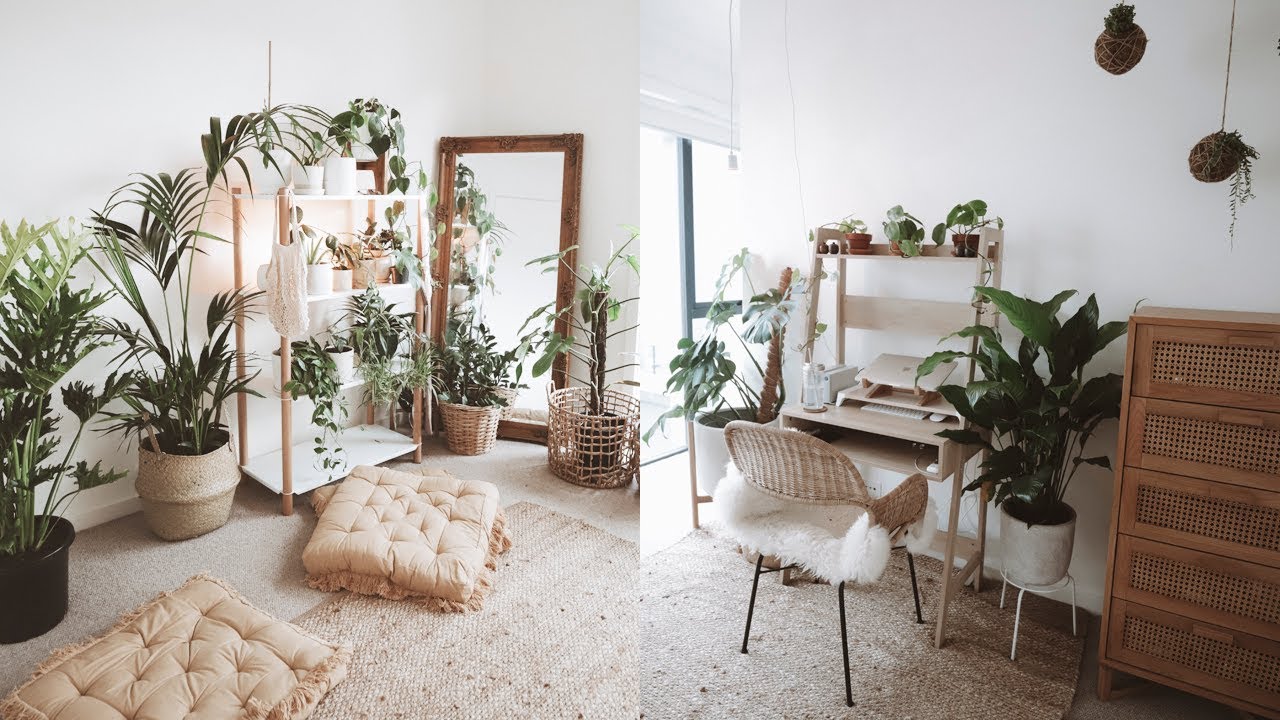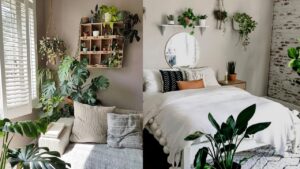If you’ve been thinking about putting indoor plants in your bedroom, you’re not alone. They can improve the air quality of the room and add color to a space. These easy-care plants will also improve the air quality in your room. Read on to learn how to decorate your bedroom with plants. And don’t forget about the health benefits! You’ll be surprised to know that indoor plants are low-maintenance and add color to a room!
Indoor plants improve air quality
You can start with a plant that can purify the air in your bedroom. A spider plant is perfect for the inexperienced indoor plant enthusiast, since it is easy to care for and reproduces rapidly. This type of plant is also one of the best air purifiers around, as it can fight off pollutants like benzene, carbon monoxide, and xylene, a chemical commonly found in leather. The best thing about this plant is that it doesn’t take up a lot of floor space.
Some houseplants are known to improve air quality. A NASA study found that certain plants can significantly improve the air quality inside a closed chamber. Other studies have shown that plants are effective at removing formaldehyde and other chemicals. In addition, they can also improve the mood of occupants. This is especially true if you’re an allergy sufferer. Whether you’re concerned about air quality or simply want a more comfortable space, indoor plants can help you sleep better.
Many people are unaware of the benefits of indoor plants. Aside from helping to regulate humidity, indoor plants can also increase positivity. The greenery can even lower the level of stress you feel, as nature has a way of calming us. So, if you’re looking for a cheap way to add a little nature to your bedroom, invest in a couple of plants and see how they improve your health!
Some of the most popular types of plants that improve air quality indoors include peace lilies, ferns, and snakeplants. Spider plants are excellent choices for bedrooms since they improve the quality of the air and also reduce pollutants in the air. The spider plant is not suited for pets because it is toxic if eaten. They can take care of a lot of pollutants and make your bedroom look cleaner than ever.
They can be a focal point in a room
If you’re planning to add some color to your room, consider using a houseplant as a focal point. Oversized plants can instantly fill a bare corner and add visual interest. Some popular choices include the Boston fern and fiddle leaf fig. While you may think they’re too large for your bedroom, they’ll still make a dramatic statement and are very low maintenance. You can also opt for a modestly-sized plant that can eventually fill the room.
If you’re not sure how to use plants as a focal point in your room, consider a statement piece like a large wooden coffee table or an over-sized plant. If you don’t have a green thumb, you can opt for faux plants. If you don’t like the look of plants, consider using a faux banana plant instead. Either way, this technique can work well for your room.
Another way to use a plant as a focal point is to add a wreath to your door. People naturally gravitate toward the front door and will want to enter your home. Wreaths add a warm and welcoming feel to the room. It can also make a nice focal point in your room if you have a large window. By combining indoor plants and a wreath, you can create a room that’s both functional and appealing.
Another great option for using plants as a focal point in your room is to create a photo ledge. This simple DIY project can be completed in an afternoon. Hanging photos, books, and other seasonal decor will add to the beauty of the bedroom. Adding a photo ledge to your wall is another great way to make a bedroom look more classic. If you don’t have the skills to create a photo ledge yourself, you can find instructions on the Internet.
They are low maintenance
Many houseplants are considered low-maintenance. While some require an expert green thumb to keep alive, there are many low-maintenance choices that will add beauty and health to your home. Choose low-light plants, indoor flowers, and hanging plants that require little or no maintenance. Low-maintenance plants can also be low-light varieties of tropical houseplants and low-maintenance herbs.
A parlor palm or a snake plant is a great option for a bedroom. They grow best in high humidity, but can survive in average home conditions. Ensure that the soil stays evenly moist, barely dry, and is well-watered. Snake plants are less-than-attractive, but they can survive in low-moisture conditions. Consider a snake plant or a creeping fig for a low-maintenance option.
If you have the right lighting, you can decorate your bedroom with plants that are low-maintenance. Many plants require little or no maintenance, but a few will grow rapidly in the right place. Just make sure to read the care instructions before purchasing a plant. If you can’t decide on a single plant, make a collection based on a common trait, taste, or complementary decor objects.
Another low-maintenance plant that requires minimal attention is the rubber plant. This low-maintenance plant has glossy leaves and requires a well-drained pot. The leaves are glossy and can add a beautiful touch to your room. Rubber plants have similar air-filtering properties to weeping figs, but they are smaller and require less care. They are also great in a minimalist room, and can survive with little attention.
They add color
If you’ve been trying to figure out how to decorate bedroom with plants, you’ve come to the right place. Plants are beautiful decor that can brighten up a room and are healthy too. Before you decide to buy a whole bunch of colorful houseplants, think about some creative ideas. For example, line the walls of your bedroom with potted greenery. This will soften up the overall look and make the room look larger than it actually is.
Choose a plant with long stems to cling to furniture. You can use plants like Creeping Fig, Ivy, and the Boston fern. Some plants are even so big that they’ll cover entire tables or shelving units! If you don’t like the idea of a large plant on top of your bed, you can opt for a modest-sized plant that will eventually fill the entire room.
They are easy to care for
If you are looking for a way to brighten up your room and have minimal maintenance, consider hanging or trailing plants. Place them over the bed, along a side wall, or on a windowsill. Plants that thrive in low light conditions are ideal for bedrooms. Also, some plants can survive in direct sunlight, so keep them near windows. A smaller plant may also work well as a window plant.
Some plants with calming scents make great choices for bedrooms. For instance, peace lilies are one of the most popular choices. Not only do these plants look pretty, but they can also help you sleep better at night. Orchids also help you focus and can cure your anxiety. Another popular option for bedrooms are gerbera daisies. These plants can survive in low light conditions and do not need much water.
Houseplants are the best choice if you want a room with a botanical theme. Houseplants provide several benefits, including fresh air and a healthier atmosphere. They also remove impurities from the air and are easy to care for. The only requirement is that you provide adequate light and water them weekly. Once you start seeing yellow leaves on them, it is time to water them. Aside from aesthetics, houseplants have a lot of health benefits and are an affordable way to liven up any room.
If space is a concern, you can try snake plants. These plants are known for their long life and resistance to indoor air pollutants. They require minimal care and can grow up to six inches in diameter. Besides being a nice addition to any bedroom, snake plants also help you sleep better at night. They can grow in other pots and are easy to propagate. For best results, you should purchase a snake plant in a bedroom and keep it near a west-facing window.



